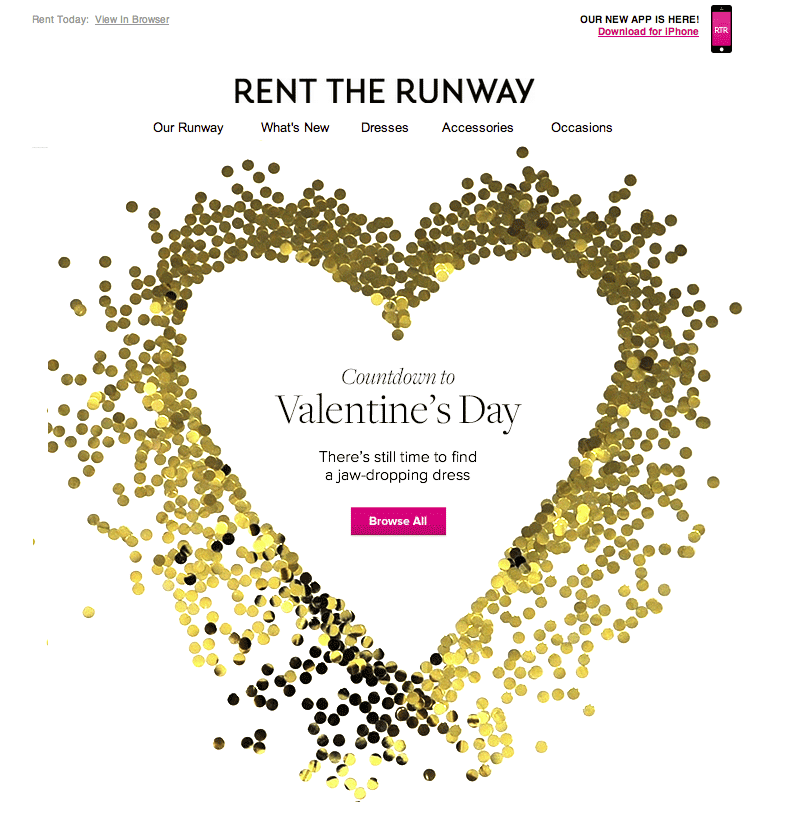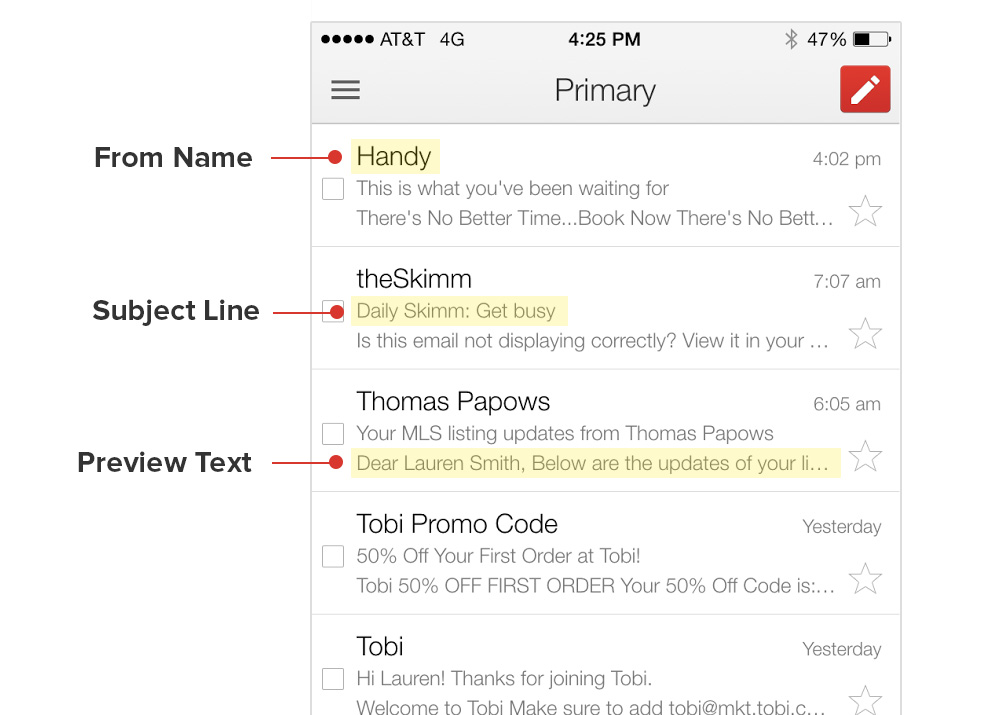

When it comes to email, the answer is not as simple as “more is better”. Sending too many emails during the holidays could do more long term damage to your list than you had bargained for. There is a fine line between motivating those eager holiday shoppers to click through and being hit by an unsubscribe. For starters, don’t increase email correspondence across the board – increase frequency mainly for email segments that include long-time or multi-purchase customers. Brand new subscribers who haven’t yet purchased are the most likely to unsubscribe due to inbox overload – after all, you haven’t yet had a chance to provide them with any real value or positive customer experience.
If customers are requesting to unsubscribe, you may as well give it one last shot with a cheeky farewell.
Image courtesy of MyEmma.com
New customers or leads are more likely to trust other shoppers if they are not yet familiar with your brand. Knowing this, you should send emails featuring trending or “hot” products, social proof (“our most Liked product this season!”), or PR features (“as seen in Real Simple!”). Returning customers are more likely to regularly engage your email communications and are also more likely to be interested in your newest products that cater to their needs.
New customers may be more trustworthy of other customers. Feature top customer picks, feature the most “favorited” items or hot sellers in emails to newer signups.
via: Myemma.com


Macros: Experiment with macros for any customer information you have available (location, name, previous purchase category, etc). The goal is to sound familiar and approachable, not desperate. Beginning the body copy of your email with “Good Morning, Stephanie” is way more effective than a subject line that reads “TRUST US, STEPHANIE! YOU CAN NOT MISS THIS SALE”. However, you shouldn’t shy away from using macros in subject lines altogether: personalizing a subject line in an email provided a 23.5% increase in open rates. Just do it tastefully and conversationally. “You’ve got good style, Stephanie.”Re-target: What is more personalized then reminding someone of something they already like? This may be a particular case where “more is better”. Consumers are constantly on the hunt for something amazing for everyone on their list. They are “favoriting” and adding to cart but often leave shortly after their shopping session began. Take advantage of this low hanging fruit: track wish lists, open-carts, even down to website visits. While you may already have something set up for retargeting it is worth increasing the frequency in which you are sending follow-ups.

Up-sell: “You may also like” or “other customers have bought” are features that some email clients such as Mailchimp offer as part of their service. Customers have already demonstrated an interest in specific products or categories. They have given you insight into what type of product they’re after but perhaps didn’t have the time available to continue their search.


As Google coined it, modern holiday shopping is all about the moment not the marathon. Whether it be the morning commute, waiting at the doctor’s office or standing in line at the grocery store, all of these micro-moments are shopping opportunities. In fact, product or shopping-based mobile searches have increased 120% each year. This surge will surely be supported by the adoption of other phone-centric technologies like mobile payments and shopping apps.Here are some quick examples of how to prepare:
- Test emails for mobile responsiveness and deliverability. If your email provider doesn’t offer multi-view previews, consider using a third party testing software like Litmus.
- Consider the preform view/text. When it comes to email, every character counts. As you’ve probably noticed, most email clients give you a preview snippet featuring the first few words of the email content. Maximize each character to the fullest extent!
- Develop mobile-friendly landing pages. Does your email tout a top ten list of must-haves? The click better deposit them on an easy to read version of that list. Perhaps with a one click add-to-cart option next to each item. Nothing says “bounce” quite like a well-meaning customer click who is met with a jumble of unrelated content and product.




Always. Be. Testing. Q4 is not a time to take chances. Now is the time to dial down, measure your efforts and adjust accordingly on the fly. Most email service providers – including our provider of choice, Mailchimp – allows for multivariate testing. Here are three things you can A/B test for:
– Content -> lifestyle pictures versus individual product pictures.
– CTA buttons/ prompts.
– Time of day/ day of the week.
Retailers too often rely on a static email schedule such as “every Tuesday at 9am.” Consumers develop email blindness and almost become conditioned to gloss over the anticipated email sitting in their inbox. The predictability of it in some cases can take away from its effectiveness and squash any motivation a user has to click in to the email. Email schedules may need to shift or evolve due to time sensitive promotions you are hosting, seasonal promotions, or even the day on which your customers get paid. What is working for you now, or what won the last A/B test, will not always be guaranteed to win in the future. Or even next week!
Overall, the key message is to understand the needs of your various email segments and personalize accordingly. Keep your messages simple and driving towards a singular point – whether it’s free shipping, a hot new product, a 24-hour blowout sale, etc. And don’t feel like you’re locked into any routine just because it’s Q4 and you’ve had your email strategy (down to the subject line copy) mapped out for weeks. Analyze your A/B test results more frequently, and make adjustments on the fly. Email marketing can work and can be a helpful resource for shoppers looking to be hit with the right product or message at the right time.






